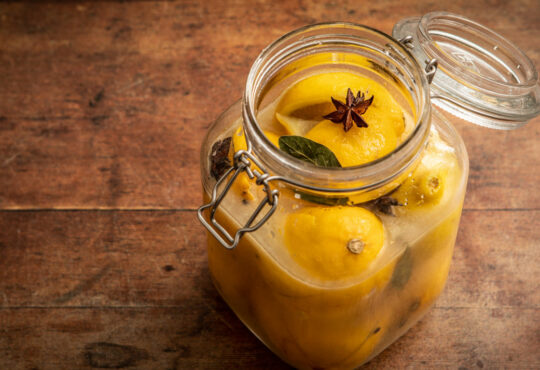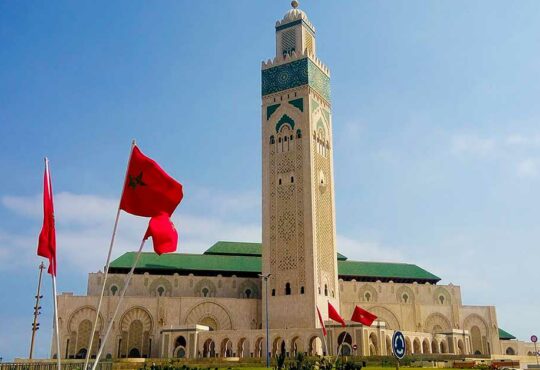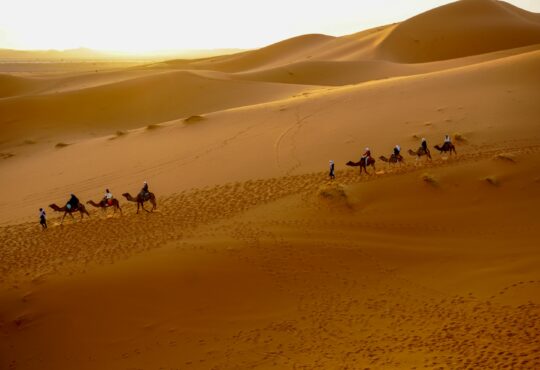
Bulgaria is a country in the Balkan Peninsula that offers so many things to do. It is a small country with amazing natural and cultural variety, as well as a long and rich history.
From subtropical exotic beaches to alpine mountains, from large plains to wild forests and deep gorges, you can travel around the country and see a lot of different landscapes.
Many kingdoms and people have conquered this land, leaving their ancient remains, their cultural traces, and their traditions. As a result, there are so many places to visit and things to do.
Let’s make a journey to Bulgaria and dive into its geography, culture, history, and modern life!
Bulgaria is an average European country- not so big, and not so small in area. It is located in the eastern part of the Balkan Peninsula. Its capital is Sofia.
The country features large plains- some flat, and some a bit hilly, a lot of mountains, and a beautiful seaside. The highest peak is Mt. Musala (2925 m), which is the highest point in the Balkans and the whole of Eastern Europe (if Caucasus is not included).
The country has thousands of years of history and has been a land of many civilizations- ancient Thracian, Roman, Slavic, Medieval Greek (Byzantine), Medieval Bulgarian, Ottoman Turkish, and modern Bulgarian.
All of this, along with its nature, formed its current culture and traditions. You can see a lot of ancient remains, old towns, folklore villages, modern cities, and resorts.
Bulgaria is known for its rose oil, which is consedered the best in the world, and celebrated as one of the Bulgarian’s symbols.
Another thing that Bulgaria is proud of is wine- this is the country producing some of the best wines on our planet.
Bulgarian food has its own features and is highly influenced by its neighboring
nations and its history.
All of the above offers a lot of opportunities that you can try. And if you wonder which things to do, just do what would lead you to know this country better, below is the Bulgaria bucket list.
So, if you have not tought about visiting Bulgaria, these 20 reasons will change your mind.
Sofia is the largest city in Bulgaria, and in many ways, it presents the most essential aspects of the country, mainly its modern side.
If Sofia is your entry point to Bulgaria, don’t be in hurry to leave it, but first, explore it and get some impressions from the city, the people, and the life here.
Go to the center of Sofia- the crossroad with the statue of Saint Sofia, the symbol of the city.
If you go eastward, you will see the main government buildings, located along the road with the iconic “yellow paves”, and soon you will reach one of the main landmarks of the Bulgarian capital- the St. Alexander Nevsky Cathedral.
If you go southward, you will see St. Nedelya Church, the main pedestrian on Vitoshka Street, and the National Palace of Culture.
Still in this area, you can visit the National Historic Museum, the ancient St. Georgi Church, as well as many parks nearby.
Finally, you can’t miss the high mountain south of the city. This is Vitosha, and if you have time, go hike it and enjoy its beauty and its stunning views of Sofia from above.
Yes, there have been many cities in Europe, existing from the earliest historic times. But while most of them are now just dead ruins, Plovdiv has remained constantly alive until today. And you can see that there are multiple layers of history. It’s like traveling back in time.
Plovdiv is the second-largest city in Bulgaria, located in the middle of the Upper Thracian Plain. But although this plain is flat, there are several hills, rising like islands on its flat surface.
These are the famous “Hills of Plovdiv” (“Plovdivski tepeta”), and the city is established on and around them.
The most attractive and interesting part of the city is easy to walk. First, you can walk on the longest pedestrian street in Europe, known as the “Main Street” (“Glavnata”).
Then, you can explore the Old Town, situated on the three merged hills, and see its main landmark- the Ancient Roman Theater.
Don’t skip the Roma Stadium at Dzhumaya Square, the museums of the Big and the Small Basilica, and the Kapana Quarter!
Now, let’s go to the extreme northwest of Bulgaria. The country is geographically divided into “North” and “South” by Stara Planina (The Balkan Mountain), and this mountain begins from this area.
If you travel among the foothills of the mountain, you can suddenly see a unique rock phenomenon, something like a party of rocks with strange shapes. This phenomenon is called Belogradchik Rocks, and they are one of the country’s landmarks.
The Belogradchik Rocks are a geological formation, made predominantly of sandstone. There are several groups of rock, and most of them have their names due to the images they imitate.
Examples are “Adam and Eve”, “The Mushrooms”, “The Lion”, “The Madonna”, and “The Maid’s Rock”. But there are not only rocks, this area is of historical significance, and it is also famous for the Belogradchik Fortress- one of the best-preserved strongholds in Bulgaria, dating from the Roman Empire, and used as a military fort until the end of the 19th century.
Today, the combination of the fortress and the rock create a fantastic landscape coming from a fairy tale.
Bulgaria has been a strong empire during the Middle Ages. It had two medieval capitals, but the largest and better-preserved one is Veliko Tarnovo (or just Tarnovo).
It is located in the hilly area north of Stara Planina (The Balkan Mountain), over the bends of the Yantra River. And the most spectacular part of it is called Tsarevets- a fortress on a steep hill, surrounded by the river and connected to the rest of the city by a bridge.
Veliko Tarnovo has a long history. It has existed for more than 4000 years, initially as a military fortress.
The fortress had a significant role during the First Bulgarian Empire (from the 7th to the 11th centuries BC) and had become the capital of the Second Bulgarian Empire (from the 12th to the 14th centuries BC) until finally, it had fallen under Ottoman rule.
Today, Veliko Tarnovo is one of the big cities in Bulgaria. It features many new neighborhoods, and an “old town” presenting the architecture of the old houses from the Revival era (19th century).
But again, the main attraction is the Tsarevets Fortress with the main king’s castle and other medieval constructions.
Let’s go hiking! As I mentioned above, a large part of Bulgaria consists of mountains. Two of them-Rila and Pirin are the highest, they are alpine, with glacial lakes and valleys, and sharp peaks.
And Mt Musala is the highest peak in the first one- Rila Mountain with its 2925 m altitude. It is the highest peak in the Balkans and the whole of Eastern Europe.
Mt. Musala is located south of the capital, Sofia. If you come from the Bulgarian capital, you can see how the natural landscape changes.
First, there are deciduous forests to about 1000m altitude, then is the area of the coniferous forests. You reach one of the largest mountain resorts north of Musala, called Borovets.
From Borovets, you can take a cable car to 2380 m, above the coniferous forest zone, in the alpine dwarf pine zone. Or you can reach it on foot, starting your hike from 1350 m.
On your route to the peak, you will walk between several glacial lakes, higher and higher, until the dwarf pines disappear and you enter the zone of the alpine tundra. Finally, you reach the peak and enjoy breathtaking panoramic views in every direction.
Now, let’s go to the wildest and deepest forests in Bulgaria. It covers large parts of the Rhodope Mountains- the largest mountain system in the country. This mountain system consists of valleys and gorges, soft summits and peaks, some of them rising over 2000 m above sea level.
Small towns and villages are scattered in the mountain forests. But there is a wilder area, without any settlement, only a road that crosses it, and recently- some private villas in the forest. This area is a bit like a plateau, or just a flatter network of valleys and summits, covered by deep and wild Canadian taiga type of coniferous forest. It is mixed with meadows and lakes, today turned into dams, with a lot of bending streams on the meadows. The area is called Beglika, and a large part of it is turned into a natural reserve.
Beglika is an excellent place for wild adventures. It is great for hiking, biking, or just camping at the lakes’ shores. There aren’t any special historical or natural sites, but the whole environment gives you a feeling of the wildest taiga forests on the Earth-like those in Canada, Finland, or Russian Siberia. Needless to say, the beauty of this place is fantastic.
Have you heard about the product that Bulgaria is most famous for? It is rose oil, the best rose oil in the world. The quality of the Bulgarian rose oil and the other products made by it- creams, perfumes, or rose water is the highest among all other brands. For this reason, one of the names of Bulgaria is “The Country of Roses”. And this rose glory comes from a specific place in the country, with the best conditions for oil roses.
This is the Kazanlak plain, located near the geographic center of Bulgaria, between Stara Planina (The Balkan Mountain), and Sredna Gora Mountains, called also “Rose Valley”. If you come to the Rose Valley at the end of May or at the beginning of June, this is the season where the whole plain is covered by roses.
Not just any kind of roses, but those producing the precious rose oil. At that time, there is also a local Rose Festival, when people celebrate the rose harvest, and choose the Queen of Roses. But even during the other seasons, you can visit Damascena Rose Site Museum and enjoy the best rose aroma on the site.
There are several famous wine brands in the world, coming mainly from France, Chile, and Australia. But do you know that the Bulgarian wine is not lower than them? Yes, it is not as popular as these countries’ wines, but it is a matter of advertisement rather than quality. The best Bulgarian vineyards grow in the Upper Trakia Plain, between Sredna Gora and Rhodope Mountains, mainly at the edge of the plain and at the foot of the mountains.
And one of the best places where you can taste the best of the Bulgarian wine is Starosel- a village located on the southern slope of Sredna Gora. There is a modern wine and spa complex, where you can not only try various kinds of wine but also enjoy an excellent spa and other resort activities in one place. But that’s not all. Starosel is known as one of the largest ancient Thracian sites.
There is a temple and a tomb, dating from the middle of the 1 st millennium BC, a place related to some of
the strongest Thracian kings. Finally, you can hikethrough the beautiful hills of Sredna Gora and enjoy the picturesque nature around the village.
Let’s get back to the mysterious Rhodope Mountains again. This time, let’s venture closer to the border with Greece. We can find a karst area where the valleys become steep canyons. One of them is Trigrad Gorge, where both slopes of the canyon are so steep that you pass through a corridor, with only a narrow strip of sky above. There, at the southern end of the canyon, you will find a cave. It is called Devil’s Throat.
The fierce mountain river (Trigrad River) enters the cave and we can see the entrance. About 200m below, we can see the exit. But where the river flows underground between the entrance and the exit, it remains a mystery. In a test, scientists used red paint to calculate the distance, and it appeared more than 40 km, somewhere below the surface and below the cave!
The cave is arranged for tourists, but the dark cave hall looks scary, so the name “Devil’s Throat” fits perfectly the image of the cave. But when you go out of the cave, there are many other things that you can do in the area. You can go hiking, you can dive into the local life in the nearby Trigrad village, you can ride a horse, or you can hike the peak with one of the most spectacular views in the Balkan Peninsula- Orlovo Oko (Eagle’s Eye).
Let’s go to the Black Sea Coast. In Bulgaria, it is also called the “Bulgarian Riviera”. And indeed, it presents excellent beaches, quiet bays, rocky promontories, and stunning sea views. One of the best parts of the coast is the area of Nessebar and Slanchev Bryag (Sunny Beach).
Nessebar is one of the oldest towns in Bulgaria and the whole of Europe. It is located on a small peninsula (or in fact- an island, connected to the mainland by a narrow isthmus).
The old town of Nessebar presents a lot of churches, most of them now ruins, dating from the early Medieval era. And these churches are surrounded by beautiful old houses in Revival style, with narrow streets between them.
Right beside Nessebar is the wide bay of Slanchev Bryag (Sunny Beach), featuring one of the longest beaches in Bulgaria. But this is not just a beach. In some places, it is more than a kilometer wide, featuring unique dunes with unique wild sand plants on them.
Unfortunately, part of the dunes are now destroyed and have been swallowed up by the large Sunny Beach resort, but there are still enough spots where you can explore them. And the whole area of Nessebar and Slanchev Bryag forms a great place where you can combine your summer vacation with culture and history.
Let’s go further south, following the Black Sea coastline of Bulgaria. South of Nessebar, there are a lot of cities, villages, and resorts at the coast, like Pomorie, Burgas, the old town of Sozopol, the resorts of Primorsko, Arkutino, the natural reserve of Ropotamo, and more. But the more southward you go, the greener and more natural the landscape become.
Finally, you can see a beautiful meandering river, flowing into the sea by a stunning sandbar. This is Veleka River, and the forests and hills around it belong to one of the wildest and most beautiful subtropical mountains in the Balkans- Strandzha (Istranca), shared between Bulgaria and Turkey.
The forests of Strandzha reach the Black Sea Coast, creating a stunning combination between green and blue, separated by beaches, rock cliffs, and lonely bays. There are two coastal villages-Sinemorets and Rezovo, and one of the wildest beaches in Bulgaria- Silistar beach is located between them. You can hike deep in the mountain of Strandzha, and go camping at the coast of Silistar, enjoying the most adventurous sea and mountain experience in the country.
This leads us again to the middle of Bulgaria, in Stara Planina (The Balkan Mountains), north of the Rose Valley. Here the main summit of the mountain descends from west, from the highest peak Mt. Botev (2376 m) to Shipka Pass (1150 m). Then it proceeds eastward, rising to two emblematic peaks- Shipka and Buzludzha.
The area of Shipka and Buzludzha is of great historical significance. Mt.Shipka and the neighboring Shipka Pass are related to an epic battle during the Russo-Ottoman war in 1878, in which the Bulgarians defeated the Ottoman army, which eventually lead to Bulgarian independence. And Mt. Buzludzha (1432 m) has been a favorite place for the Bulgarian communists for their meetings.
The second historical event, referred to as the communist past of Bulgaria has a lot of contradictions today, but the most important here, as well as at Shipka, is the two monuments, offering spectacular views. Especially for Buzludzha, the Communist Party of Bulgaria has built a monument without realizing that one day it will be called “the UFO”, due to its shape. After the fall of Communism, the monument of Buzludzha was abandoned but now is subject to some of the best Instagram images from the country.
Now, we return to the Rhodope Mountains. And let’s approach the mountains from Plovdiv or the road to Smolyan. This road enters deep in the mountains, following the Chaya River Gorge. Only 9 km from the entrance of the gorge at Asenovgrad, the road passes by the second-largest Christian Orthodox monastery in Bulgaria- Bachkovo Monastery.
Bachkovo Monastery was built during the Middle Ages. It contains two churches, a monk’s dwelling area, and a small museum, as well as several other additional buildings. The atmosphere in the monastery is mystic, taking you on a travel back in time, to the silence of the past. But the real mystery starts on the trail from the monastery to the Red Wall natural reserve.
At first, you pass by an older silent building. A tomb of monks who have lived here centuries ago. Then, the trail starts ascending through several picnic areas with meadows and a waterfall. Beyond the meadows, you enter into a deep forest with a small building used for baptism, called “ayazmo”.
And then, you reach the mysterious cave of the hermits and a small chapel hidden in the rocks. Here the ancient human presence finishes, and the trail starts going through a deep canyon, from 350 m altitude, where the monastery appears, up to 1450 m, the summit at the Red Wall reserve, offering breathtaking views, combined with mystery all the time.
Explore Melnik, the smallest city in Bulgaria, and the sleeping Kozhuh Volcano. In the extreme southwest angle of Bulgaria, you can see the smallest city in the country, with only about 350 citizens. This is Melnik, and it is located on the southwest slopes of Pirin Mountains, at the edge of Struma Valley.
But this is not just an ordinary city. It has a long history, dating from ancient Thracian times. Thecity passes through ages of bloom and decay, and many traces of its history has remained. Today, it is declared as a “museum city”, presenting a rich and beautiful Revival-style house. In addition, it is another wine center in Bulgaria, and you can explore more of it in the Wine
Museum.





